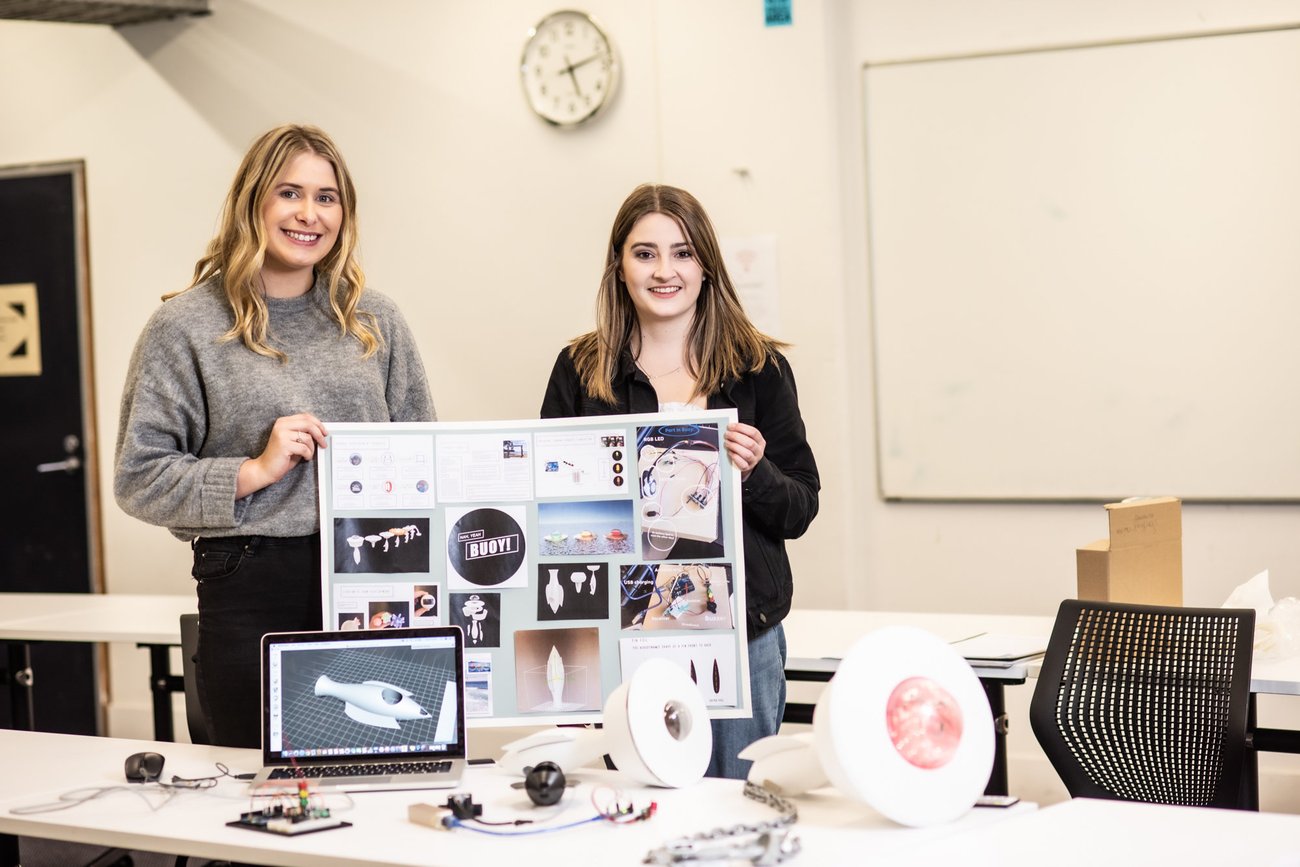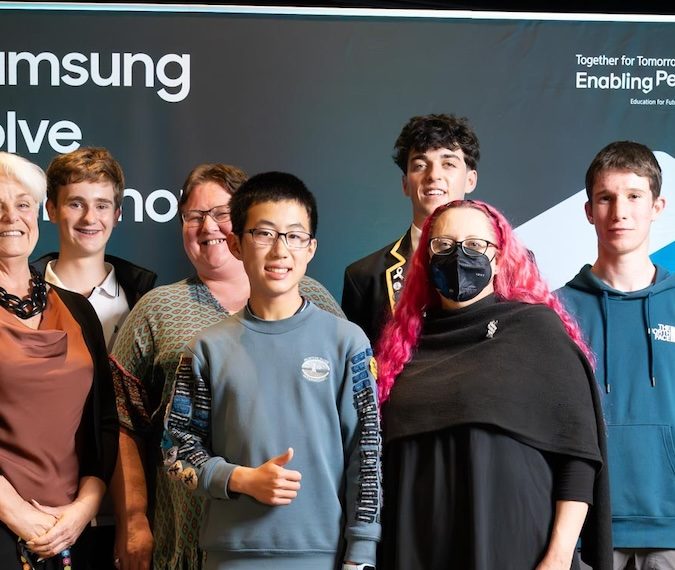Nah Yeah Buoy: The James Dyson finalists who designed a buoy to prevent drownings from rips

The name, Nah Yeah Buoy, sounds like it was coined in the university halls over a few drinks. Stuart says, “it came about after Hannah accidentally said, “ye nah not that one”, then it developed into the Nah Yeah Buoy, which is classic Kiwi Slang”.
However, the product is much more sophisticated. It uses water-flow sensors to detect rip currents, then translates the severity of the rip into a colour – red, orange or green – using a transmitter to communicate this information with the other buoys in the water, as well as a receiver on the beach, which is an app used by surf life savers.
It can also be used to prevent other hazards in the water, such as sharks.

Stuart says, “the app can show the strength out in the water and can be manually changed and adjusted, for example if there was a shark in the water all of the buoys could be adjusted so it was flashing red so everyone could see they needed to get out of the water.”
Both students are in their final leg at the Victoria University School of Design where the idea was born. Stuart states, “In one of our courses, we were originally asked to come up with a design concept to solve a problem. As a class we voted for our favourite ideas that we wanted to work on and mine was lucky enough to be picked. That’s when Hannah joined on and a couple of others. From there we kept moving forward and soon after decided we wanted to have a go at the James Dyson Award, so we pursued that.”
The pair of students have now beaten out over 1,000 other entries from over 20 countries in the process of making the top 20. They found out about the award, Stuart says, when they got a random call up to feature their product on Seven Sharp. Since, they have been busily juggling their university careers with media up and down the country.

Although the product is yet to be tested in the ocean, they hope to eventually develop the product and take it to market. Stuart says, “For sure. It will need funding and the right people supporting us, as well as refinement on the engineering side.”
She adds, “In the future we would perhaps prefer to use radio frequency to enable the buoys to communicate more effectively with each other and allow for more range.”
For now, the students await the judging, set to be announced over the next few weeks. If they receive runners-up in the worldwide competition, they will receive $9,000. If they win the entire competition, they will receive $55,000, plus $9,000 for their university.
James Dyson Award
The competition is open to student inventors with the ability and ambition to solve the problems of tomorrow. Winning solutions are selected by Sir James Dyson and show ingenuity, iterative development and commercial viability. With students from 27 nations now competing, the award is set to welcome new approaches to a broader range of global social and environmental issues than ever before.
Since the competition first opened fifteen years ago, the iconic inventor has already contributed over £1m to championing boundary-breaking concepts. To help finalists to develop their novel idea, each year the overall winner is awarded $30,000, and winners in each participating region receive £2,000. Unlike other competitions, participants are given full autonomy over their intellectual property.
The James Dyson Award forms part of a wider commitment by Sir James Dyson, to demonstrate the power of engineers to change the world. The Dyson Institute of Engineering and Technology, the James Dyson Foundation and James Dyson Award embody a vision to empower aspiring engineers, encouraging them to apply their theoretical knowledge and discover new ways to improve lives through technology.




